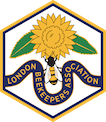
|
London Beekeepers' Association |

|
London Beekeepers' Association |
Swarms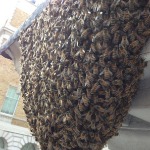 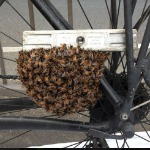 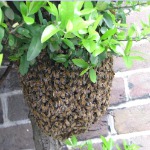 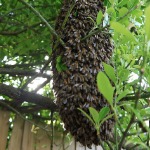
Don't panic! Swarms aren't dangerous if left alone. It's a perfectly natural thing for healthy honey bee colonies to do in May, June and July, in which half the bees leave to start a new colony. But please note that we can only deal with swarms of honeybees, like in the pictures above. Anything that doesn't look like these pictures are unlikely to be swarms of honeybees. We cannot deal with:
We recommend working through this guide to establish whether they are honeybees. Please note that swarms compromise hundreds of flying bees which quickly form a tight cluster around their queen. Once settled on a tree, shrub, wall or post, scout bees investigate places to live. When a suitable place is found, the swarm will leave for their new home. Swarms may hang around for several days until this happens. We will come and collect swarms but will only collect swarms of honey bees. Once you've established these are honey bees, look up your local swarm collector. We will come to collect swarms of honey bees, but remember that we are all volunteers with day-jobs, so please be patient. We do not charge for this service. Evenings are the best time to collect swarms. Swarms are not dangerous if left alone, but please try and keep people away from the area as a precaution. The following pictures are not honey bees (mouseover for more details).
For those interested in how beekeepers collect swarms, the following videos should give you an idea:
|
©2025 London Beekeepers' Association |